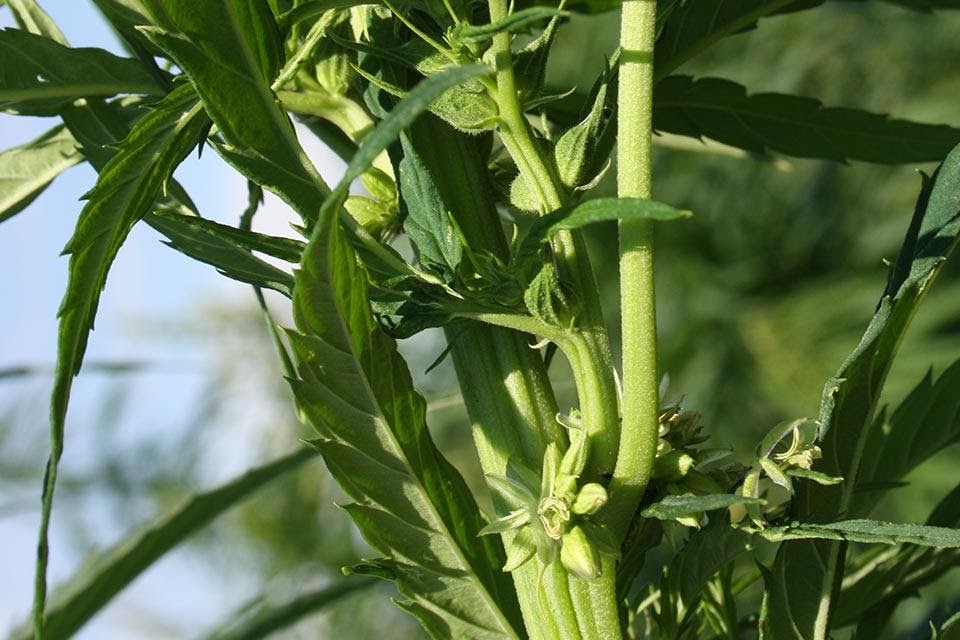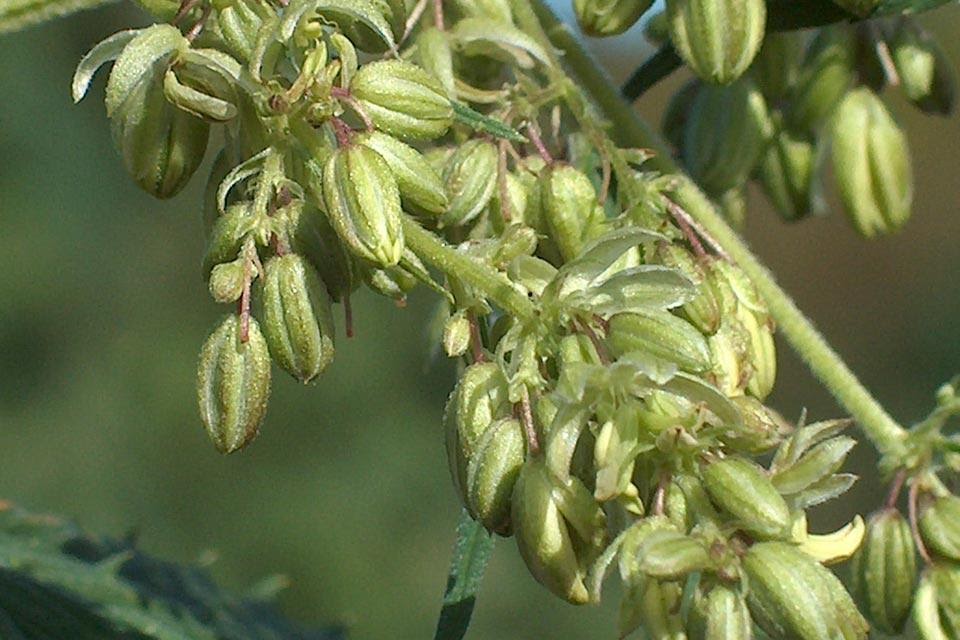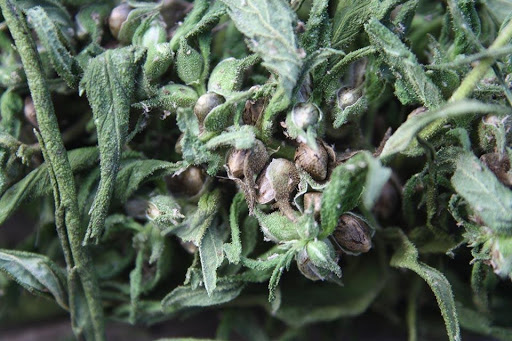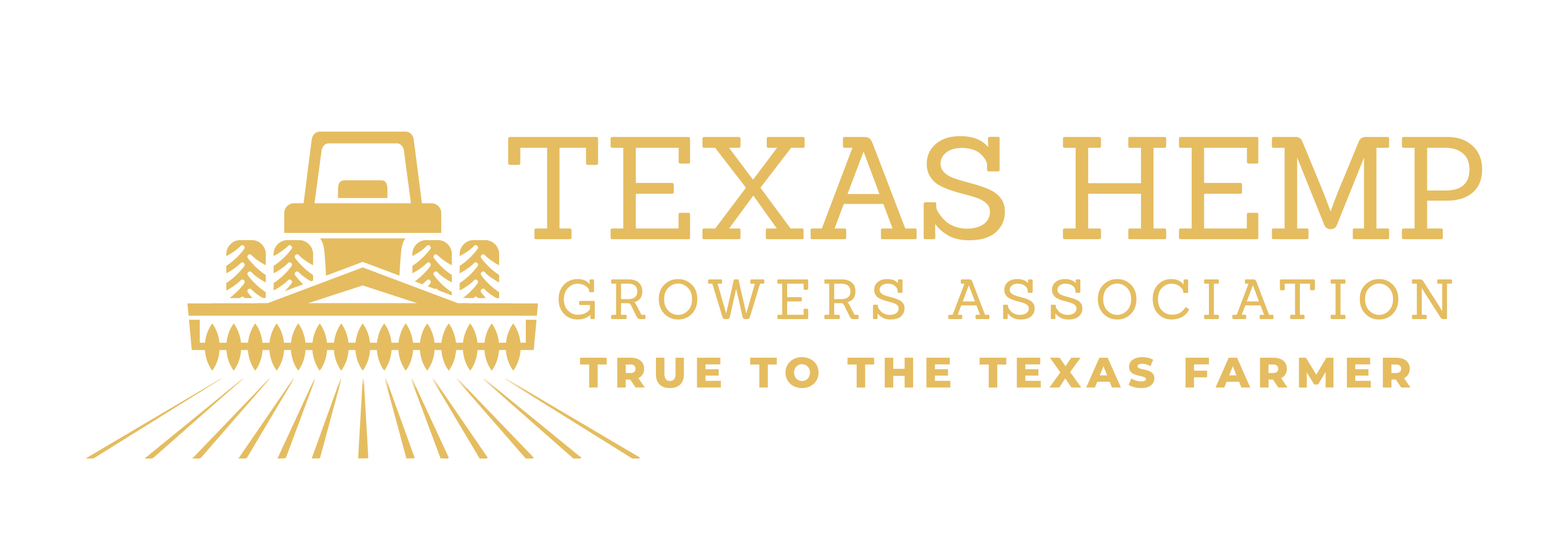Plant Flowering and Growth Stages
Hemp can be either of the dioecious type or monoecious type. In dioecious type the plant population is made up of pure female heads and up to 50% male heads. In monoecious type, the plant population has both male and female plant parts on the same head.
Industrial hemp is normally dioecious which means a plant will have either all male or all female flowers on it. The plants rely on the wind to complete pollination (anemophilous).
Prior to flowering, the sex of the plant is indistinguishable except for some general trends in growth habit. For example, in less crowded growing conditions, the female plants tend to be shorter with more branching than the male plants. The male plants will often break off easier when pulled due to less fiber at that growth stage.

Female flower. Seed development within bracts.
The flowers of female plants are arranged in racemes and can produce hundreds of seeds.
Female flowering and seed set are indeterminate. The seeds continue to develop and mature over an extended period of time. There will be both ripe and immature seeds on the same plants at time of grain harvest. When about 50% of the seed is exposed in each bract, it is ready to harvest.
Monoecious plants have both male and female parts on the same branch or raceme.

Monoecious Hemp Head
An ideal monoecious plant will have a few male flowers arranged in whorls at the base of the flower head, while the female flowers are formed at the top. After shedding pollen, the male “flower” dries up and disappears. Monoecious plants are 30% to 40% self-pollinated.

Hemp Male Inflorescence at beginning of pollen release
When inflorescence development begins, male flower primordium hangs from long multi-branched loose clusters, formed of small individual flower buds along an axis up to 30 centimeters long.
The female primordium is identified by the enlargement of a tapered, curved, tubular bract (floral sheath). Female flowers are more tightly clustered and have two long white, yellowish or pinkish stigmas protruding from each bract. Each seed forms inside a bract.

Female head with seed protruding from bracts. Near maturity.
The Sengbusch Classification System
The Sengbusch Classification system defines five degrees of monoecious forms. The methods developed by R. von Sengbusch and H. Neuer (1943) are the foundation of breeding technology for monoecious hemp:
- A pure male plant will die soon after pollen shed. Female plants continue to grow and develop seeds.
- Genetic factors dispose a plant to become male or female whereas environmental factors including the light cycle can alter the sexual expression. The light-dark cycle determines when hemp begins to flower (males appear).
- A hemp plant in the vegetative growth phase requires more than 12–13 hours of light per day to stay vegetative. Flowering usually occurs when darkness equals at least 12 hours per day. The flowering cycle can last for weeks, depending on the variety and environmental conditions.
- Regardless of seeding date, hemp will generally start to flower about the same time every year (photoperiod). Planting hemp early in the spring can produce a taller more robust plant. Late seeding of hemp can potentially produce shorter plants, but both seeding dates will result in flowering about the same time every year. In Canada, hemp males usually appear about the middle of July (within a week).
- As the growing season progresses, the bottom leaves die (atrophy) due to the lack of sunlight that can reach the bottom of the crop. Male plants die soon after shedding pollen.

